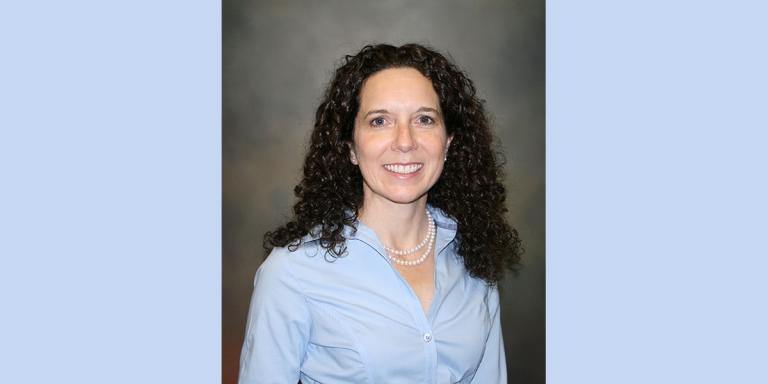
It sounds like a roller coaster approaching the end of a run: a screeching crescendo of wheels on steel tracks stopping suddenly with a loud bang and the hiss of air leaking from air tanks.
"It" is a crash test sled colliding with a concrete block and providing researchers with invaluable information about what happens to passengers in an automobile crash. The sound of crash tests is becoming commonplace in Kettering's Crash Safety Center, which has achieved a healthy dose of success less than two months since its opening.
Dr. Janet Brelin-Fornari, associate professor of Mechanical Engineering and director of the Center, said a recently completed a side-impact crash test series for a major firm had excellent results. "We started testing within two months of opening the Center back in August," she said, adding, "the company is very, very pleased with the results of the tests."
Although the name of the company must remain confidential, Fornari explained the tests were based on the Insurance Institute for Highway Safety's (IIHS) side-impact testing criteria. Generally, this testing investigates injury measurements in a crash by positioning crash dummies in the driver seat and rear seat behind the driver to determine if passengers would sustain injuries to various body regions.
In addition, the test evaluates the movement and contact of dummy heads during a crash. This assessment is critical for seating positions without head protection airbags, which, assuming they perform as intended, should prevent head injuries. Under the IIHS criteria, testing also examines the structure/safety cage to measure the amount of intrusion into the occupant compartment between the doors during a collision.
Fornari also said that this project involved testing based on the National Highway Transportation Safety Administration's (NHTSA) Federal Motor Vehicle Safety Standard (FMVSS) 214 Side Impact Protection for passenger cars. This test simulates a severe right-angle collision and involves a moving deformable barrier striking the side of a vehicle with side-impact dummies seated adjacent to the impact point.
According to the NHTSA, FMVSS 214 is one of the most important safety regulations issued by the Administration. For Fornari, the recent testing success in Kettering's Crash Test Safety Center provided critical new details that will aid in enhancing laboratory work. "Now we know we can deliver very high quality, highly sophisticated testing and achieve important results companies need," she said.
For Dr. Massoud Tavakoli, a professor of Mechanical Engineering, the Crash Safety Center proves beneficial for students enrolled in MECH 551: Vehicle Collision Dynamics and Accident Reconstruction. Some of the requirements for this course include students visiting a salvage yard to analyze a vehicle involved in a collision to determine what happened to the car during the collision and how much energy went into the actual crash. Enrollment in this course continues to increase each term as students become more interested in this growing field, thus representing yet another success story for the Center and the crash safety curriculum.
"We ran a class lab session the second to last week this past term, which is the first classroom endeavor we've integrated into the lab," Tavakoli explained. The classroom activity involved students proposing in document form possible modules for the lab and describing the sorts of tests they would like to conduct. "Some examples the students proposed include four-point harness testing for racecars," Tavakoli said, adding that enthusiastic students, "proposed some exceptional ideas, which shows the level of interest they have in studying vehicle collisions."
Tavakoli and his students conducted a test to examine witness marks on seat belts and belt grinding rings. These marks are often a tool for determining seat belt usage during a vehicle collision. Tavakoli and his students conducted tests involving a three-year-old child dummy in a child seat, as well as a 50th percentile male dummy belted in a car seat.
Tavakoli said students had a first-hand look at the kind of witness marks that a collision analyst would expect to see in a real-life collision. "I doubt any undergraduate engineering students get to experience this kind of hands-on crash testing anywhere else in the country," he noted.
To help further involve students in the curriculum and laboratory work, Tavakoli recently secured an important contribution of 11 licenses for a software package called PC-Crash and PC-RECT valued at more than $65,000 from MacInnis Engineering Associates of British Columbia, Canada.
Once Kettering integrates this software into the MECH 551 course, Kettering "will be perhaps the only undergraduate school to have access to these software packages," he said, adding that industry "currently uses this software to perform simulation of collisions. The software provides photogrametry analysis of two-dimensional images and turns them into three-dimensional renderings to show multiple aspects of a vehicle collision."
And based on all the activity in the lab since its opening, Tavakoli and Fornari are pleased that the facility and curriculum have made such an indelible mark with industry and students so quickly. "We knew this was going to be an important lab and course for the University, students and industry," Fornari said. "We're just surprised and thrilled by how successful it's been so far in such a short time period."
To learn more about Kettering Crash Safety Center, contact Dr. Janet Brelin-Fornari at (810) 762-7843, or Dr. Massoud Tavakoli at (810) 762-7922.
Written by Gary J. Erwin
810-762-9538
gerwin@kettering.edu